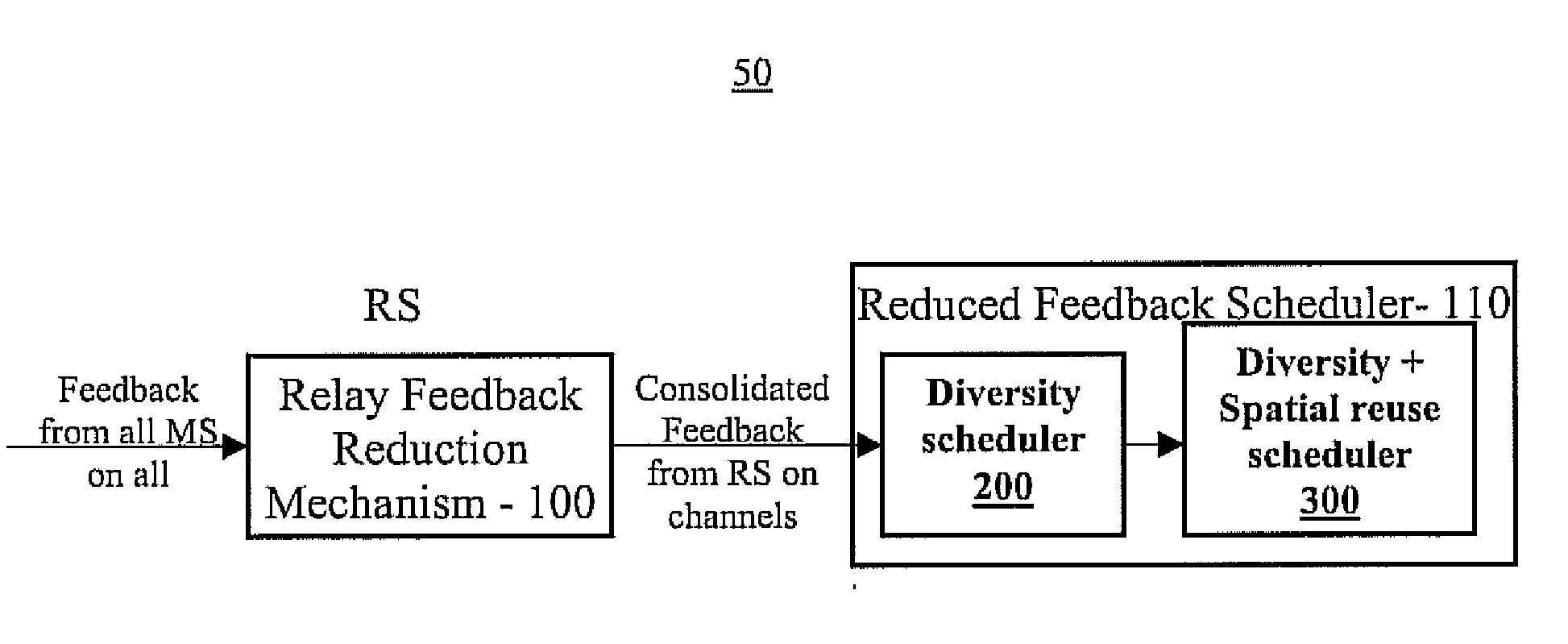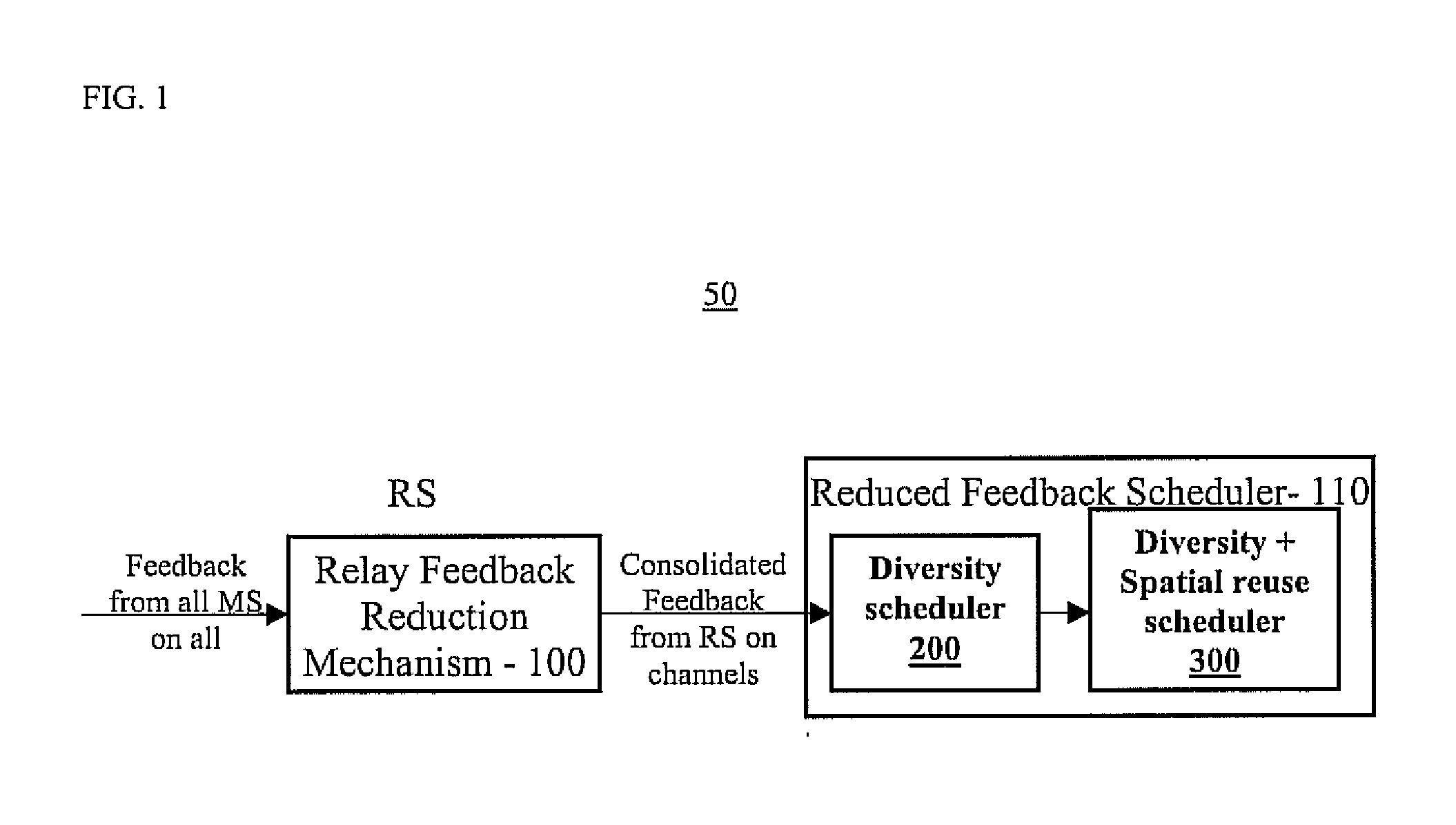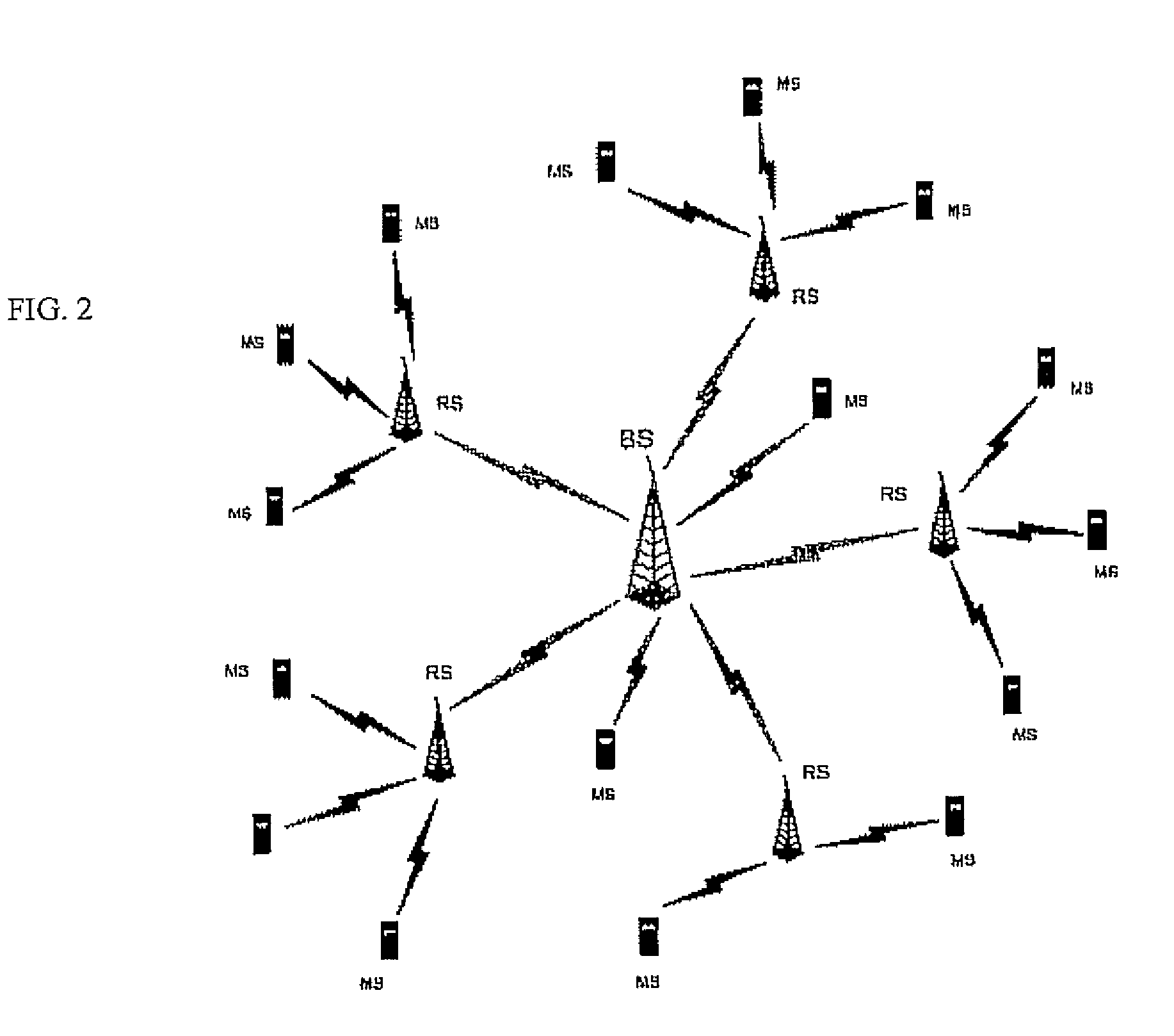System and method for scheduling in relay-assisted wireless networks
- Summary
- Abstract
- Description
- Claims
- Application Information
AI Technical Summary
Benefits of technology
Problems solved by technology
Method used
Image
Examples
Embodiment Construction
[0018]A problem considered in accordance with the present principles is to improve throughput performance of relay-assisted orthogonal frequency-division multiplexing (OFDM) cellular networks through exploitation of diversity (multi-user and channel) and spatial reuse, while maintaining scalability of feedback overhead. This is achieved by (i) scheduling methods that leverage diversity and spatial reuse gains, and (ii) a feedback reduction mechanism that, when used with the scheduling methods, reduces the feedback overhead significantly, making it scalable. Feedback measures channel characteristics, which is usually performed by mobile stations. The feedback is provided to the base station or in this case to relay stations as well. The resources needed for collecting this feedback are considered in feedback overhead.
[0019]Competitive advantages over conventional systems include the following. The present embodiments provide high performance scheduling methods that leverage both dive...
PUM
 Login to View More
Login to View More Abstract
Description
Claims
Application Information
 Login to View More
Login to View More - R&D
- Intellectual Property
- Life Sciences
- Materials
- Tech Scout
- Unparalleled Data Quality
- Higher Quality Content
- 60% Fewer Hallucinations
Browse by: Latest US Patents, China's latest patents, Technical Efficacy Thesaurus, Application Domain, Technology Topic, Popular Technical Reports.
© 2025 PatSnap. All rights reserved.Legal|Privacy policy|Modern Slavery Act Transparency Statement|Sitemap|About US| Contact US: help@patsnap.com



